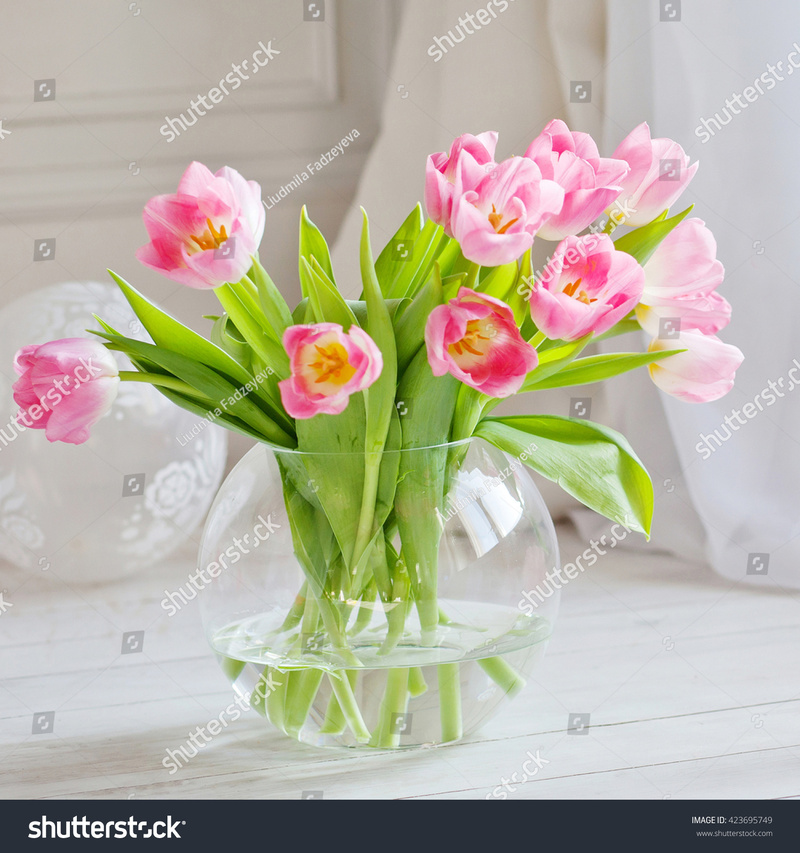An Enthusiast's Guide to Maintaining Gorgeous Hydrangeas
Posted on 26/08/2025
An Enthusiast's Guide to Maintaining Gorgeous Hydrangeas
Hydrangeas have captured the hearts of garden lovers across the globe. Their lush foliage, abundant blooms, and diverse varieties make them a standout addition to any garden landscape. However, caring for these beautiful flowering shrubs goes beyond planting and watering. In this comprehensive guide, we provide essential tips and expert strategies to help you maintain gorgeous hydrangeas season after season.
Understanding Hydrangea Varieties
Before diving into hydrangea maintenance, it's crucial to identify the types of hydrangeas you have. Each variety offers unique bloom patterns, shapes, and growing requirements. The most common garden hydrangea types include:
- Hydrangea macrophylla - Bigleaf hydrangea
- Hydrangea paniculata - Panicle hydrangea
- Hydrangea arborescens - Smooth hydrangea
- Hydrangea quercifolia - Oakleaf hydrangea
- Hydrangea serrata - Mountain hydrangea
Choosing the right hydrangea type for your landscape and climate provides a strong foundation for future success.
How to Identify Your Hydrangea
- Bigleaf hydrangeas (H. macrophylla) feature glossy, large leaves and come in mophead or lacecap flower forms.
- Panicle hydrangeas (H. paniculata) display conical clusters and tolerate full sun better than most varieties.
- Smooth hydrangeas (H. arborescens) are known for their round, ball-like flowers and adaptability to different soils.
- Oakleaf hydrangeas (H. quercifolia) stand out with their lobed foliage resembling oak leaves and their white, pyramidal blooms.
Proper identification ensures tailored care, resulting in healthier, more vibrant hydrangea blooms.

Optimal Planting for Hydrangea Longevity
Location and soil conditions play critical roles in maintaining healthy hydrangeas. Here's what every enthusiast should know:
Planting Site
- Morning sun and afternoon shade often yield the most breathtaking blooms, especially for bigleaf types.
- Choose a location protected from harsh winds and extreme afternoon sun.
- Avoid soggy areas where water accumulates.
Soil Preparation
- Hydrangeas thrive in rich, well-drained, and slightly acidic soil (pH 5.5 to 6.5).
- Amend heavy clay or sandy soils with organic matter like compost or peat moss.
- Ensure good drainage but keep soil consistently moist.
Tip: Plant hydrangeas in early spring or fall to provide ample time for root establishment before extreme weather.
Watering: The Lifeblood of Lush Hydrangeas
Hydration is the key to keeping hydrangea plants looking lush and gorgeous throughout the growing season.
How Much Water Do Hydrangeas Need?
- Deeply water hydrangeas 1-2 times per week, providing about 1 inch of water each session.
- Water more frequently during hot, dry spells--hydrangeas might wilt quickly in extreme heat.
- Apply water at the soil level to avoid wetting leaves, which can invite disease.
Mulch around the base of hydrangeas to retain moisture, suppress weeds, and regulate soil temperature. Use organic mulch materials, such as shredded bark or leaf compost, replenishing to a depth of 2-3 inches each year.
Fertilizing Hydrangeas for Spectacular Blooms
Proper fertilization can help you achieve vivid hydrangea flowers and robust growth. Here's how to feed your gorgeous hydrangea shrubs effectively:
- Use a balanced, slow-release fertilizer formulated for acid-loving plants--typically applied in spring and again in midsummer if needed.
- For hydrangea varieties that bloom on old wood (e.g., Hydrangea macrophylla), be cautious with nitrogen, which can encourage leafy growth at the expense of flowers.
- Over-fertilizing can burn roots and lead to excessive foliage with few flowers.
Nutrient Deficiencies: Symptoms like yellowing leaves or lackluster blooms may indicate the need for soil amendments or a more tailored fertilizer regimen. Soil tests every couple of years help guide optimal feeding.
Pruning Techniques for Majestic Hydrangea Bushes
Pruning hydrangeas correctly is essential to promote healthy blooms and maintain a tidy appearance. The technique and timing depend on your hydrangea variety:
When to Prune Hydrangeas
- Old wood bloomers (like H. macrophylla and H. quercifolia): Prune immediately after flowering, usually by midsummer, so you don't cut off future bloom buds.
- New wood bloomers (such as H. paniculata and H. arborescens): Prune in late winter or early spring, before new growth emerges, as flowers will form on the current year's wood.
Pruning Techniques
- Remove dead or damaged stems at the base.
- Thin out older canes to invigorate new growth.
- Shape the shrub to your desired height, but avoid excessive shearing, which can reduce flowering.
- Deadhead spent blooms to keep your hydrangea garden looking fresh.
Tip: Always use sharp, clean pruning tools to avoid disease transmission.
Changing or Enhancing Hydrangea Flower Color
One of the most fascinating features of some hydrangeas, especially bigleaf types, is their ability to change flower color depending on soil pH.
How to Adjust Hydrangea Flower Color
- Blue flowers: Achieved in acidic soils (pH below 6). Amend soil with aluminum sulfate or organic matter.
- Pink flowers: Achieved in alkaline soils (pH above 7). Add garden lime to raise pH levels.
- White-flowering hydrangeas generally do not change color.
Results can take months, so patience is key. Regularly test soil pH levels for best results, and use products designed for color control as directed.
Protecting Hydrangeas from Pests and Diseases
Vigilant care is essential to keep your hydrangea bushes healthy and vibrant.
Common Hydrangea Pests
- Aphids - Small sap-sucking insects that cluster beneath leaves or near new growth.
- Spider mites - Cause stippled or bronzed foliage; often appear in hot, dry conditions.
- Japanese beetles - Chew distinctive holes in leaves and flowers.
Treat minor infestations with a forceful jet of water or insecticidal soap. For stubborn pests, use organic or chemical insecticides as a last resort.
Preventing Hydrangea Diseases
- Powdery mildew and leaf spot can be avoided by planting in areas with good air circulation and avoiding wetting foliage.
- Remove and destroy infected plant material promptly.
- Apply fungicides if necessary, always following label directions.
Winter Protection: Ensuring Beauty Year After Year
Many hydrangea varieties are susceptible to winter damage, especially in colder climates. Proper winter care preserves buds for next year's blooms:
- Mulch heavily around the base with straw or leaf mold for insulation.
- Wrap vulnerable plants in burlap or frost cloth where winters are harsh.
- Avoid late-season fertilizing that encourages tender new growth susceptible to frost.
Hydrangeas in containers should be moved to protected locations or heavily mulched to insulate roots from freezing.
Propagating Hydrangeas: Expanding Your Collection
Love your hydrangeas? Learn how to make more by propagating from cuttings or division. Propagating hydrangeas is surprisingly simple, even for beginners.
Methods for Propagating Hydrangea Plants
- Softwood cuttings: Take 4-6 inch non-flowering stem cuttings in late spring or early summer. Root in moist, sterile medium and keep humid.
- Division: Dig up and divide mature hydrangea bushes in early spring before growth resumes, ensuring each section has roots and stems.
- Layering: Bend a low branch to the ground and bury a portion in soil. Roots will form in months, allowing you to sever and replant the new hydrangea shrub.
Patience and consistency yield a flourishing collection of dazzling hydrangeas for years to come.
Seasonal Maintenance Calendar for Beautiful Hydrangeas
Spring
- Remove winter mulch and inspect for damage.
- Prune new-wood bloomers; fertilize and top-dress with compost.
- Check moisture as plants break dormancy.
Summer
- Monitor watering needs during heat waves.
- Deadhead spent blooms for tidy appearance.
- Watch for pests and treat promptly.
Fall
- Apply mulch for winter insulation.
- Reduce watering frequency as plants go dormant.
- Take cuttings for propagation.
Winter
- Wrap or cover susceptible plants in cold zones.
- Inspect for rodent damage.
- Plan garden design and order new hydrangea varieties for spring.

Frequently Asked Questions about Hydrangea Maintenance
How do I keep my hydrangeas blooming abundantly?
- Plant in well-drained, fertile soil with morning sun and afternoon shade.
- Water consistently, fertilize moderately, and prune correctly based on type.
- Protect from harsh weather and monitor for pests or disease.
Why are my hydrangea leaves turning yellow?
- Yellow leaves may result from overwatering, poor drainage, or nutrient deficiencies--test soil and adjust care accordingly.
How can I revive a struggling hydrangea?
- Check for pests, root rot, or environmental stress.
- Trim away dead or diseased stems, aerate compacted soil, and provide balanced food and water.
Conclusion: The Joy of Cultivating Gorgeous Hydrangeas
Mastering the art of hydrangea plant maintenance requires attention, patience, and a touch of enthusiasm. By providing your hydrangeas with the right conditions, nourishment, and care, you'll enjoy an ever-evolving display of color, texture, and beauty from spring's first blush to autumn's final show. Explore the dazzling diversity of hydrangeas, share your newfound knowledge, and let your vibrant shrubs be a testament to your gardening passion.
With a little dedication and these expert maintenance tips, anyone can cultivate and maintain gorgeous hydrangeas that become the envy of the neighborhood!
Latest Posts
Pinpoint the floral that captures the spirit of your being
Celebrate with the Best Birthday Blooms
An Enthusiast's Guide to Maintaining Gorgeous Hydrangeas
Why Red Roses Reign Supreme on Valentine's Day
Colorful peony flowers and their rich symbolism unravel history and culture





